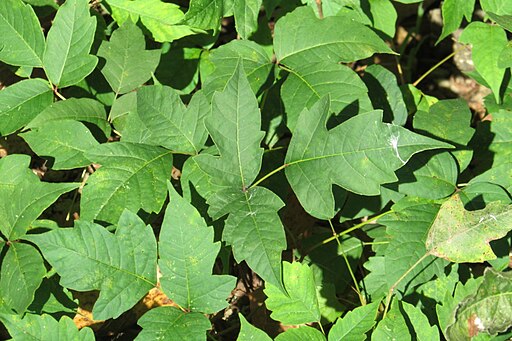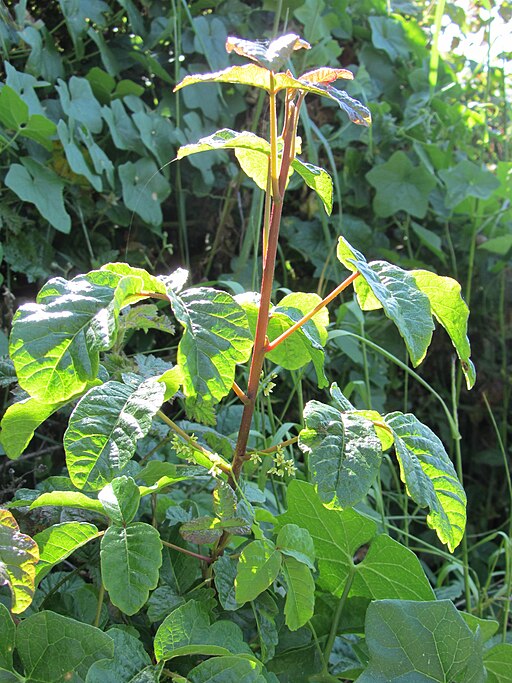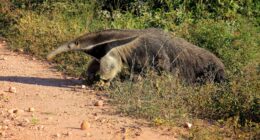Poison ivy and poison oak are plants that cause skin irritation. Poison ivy is vine-like, while poison oak is shrub-like, but both contain similar irritating oils.
TL;DR Poison ivy Vs. Poison oak
Poison ivy, commonly found in North America, has three leaflets with pointed tips. It can grow as a vine or shrub and often has a reddish color in the spring and fall.
Poison oak also found in North America but more prevalent on the West Coast, typically has clusters of three leaflets with rounded edges. It grows as a shrub or climbing vine and its leaves can be green or red depending on the season.
What is Poison Ivy ?

Poison ivy (Toxicodendron radicans) is a plant known for causing skin irritation upon contact. Its leaves contain urushiol, an oil triggering an allergic reaction in many people. Found in North America, poison ivy can take various forms, from a low ground cover to a climbing vine.
Exposure can lead to redness, itching, and blisters. Awareness of its distinctive “leaves of three” and the importance of avoiding contact helps prevent reactions. If exposed, prompt washing with soap and water can minimize the severity of the reaction, but medical attention may be needed for severe cases.
What is Poison Oak?

Poison oak (Toxicodendron diversilobum) is a plant causing skin irritation due to urushiol, an allergenic oil in its leaves. Common in North America, it typically grows as a shrub but can vary in appearance.
Exposure to poison oak leads to redness, itching, and blistering in sensitive individuals. Identification, avoidance, and thorough cleansing after contact are crucial for prevention.
The plant is often found in wooded or grassy areas. While the reaction is generally not life-threatening, severe cases may require medical attention, making awareness of poison oak and its distinct characteristics essential for outdoor enthusiasts.
Poison ivy Vs. Poison oak – Key differences
| Criteria | Poison Ivy | Poison Oak |
|---|---|---|
| Scientific Name | Toxicodendron radicans | Toxicodendron diversilobum |
| Growth Form | Often a climbing vine or ground cover | Typically grows as a shrub |
| Leaf Characteristics | Three leaflets per leaf, hence "leaves of three, let it be" | Three leaflets per leaf, similar to poison ivy |
| Geographical Distribution | Found throughout North America | Primarily found in western North America |
| Appearance | Leaves may have notched or smooth edges | Leaves are lobed, resembling oak leaves |
| Plant Variations | Can exhibit various growth forms, including a low ground cover | Typically grows as a shrub or small tree |
| Preferred Habitats | Can thrive in a variety of environments, including wooded areas and open fields | Often found in wooded areas and grasslands |
| Toxic Oil | Contains urushiol, causing skin irritation | Contains urushiol, causing similar skin reactions |
| Reaction Severity | Skin reactions vary in intensity, depending on individual sensitivity | Skin reactions can range from mild to severe |
| Identification Tips | Leaves of three, let it be" mantra; variable appearance | Lobed leaves in clusters of three, resembling oak leaves |
| Geographical Range | Widespread throughout North America | Primarily found in the western United States |
Image Credits
Featured Image By – JamesDeMers from Pixabay
Image 1 By – Chris Light, CC BY-SA 4.0, via Wikimedia Commons
Image 2 By – Akos Kokai, CC BY 2.0, via Wikimedia Commons






